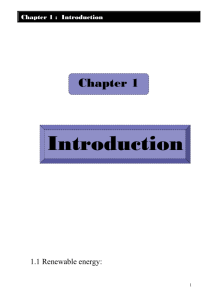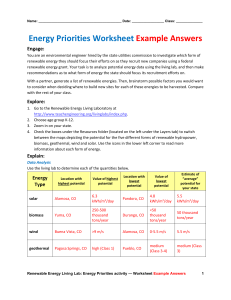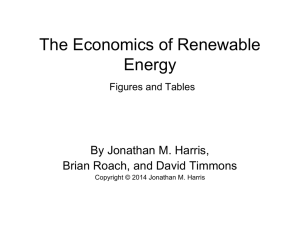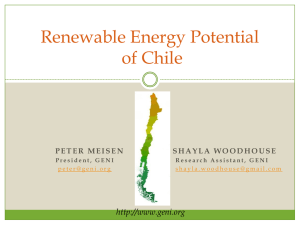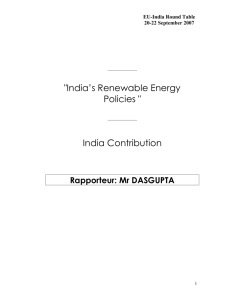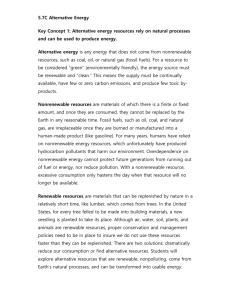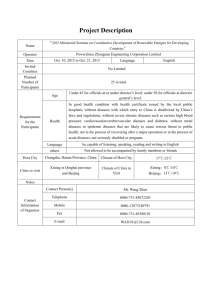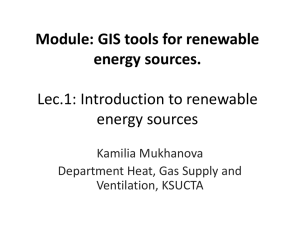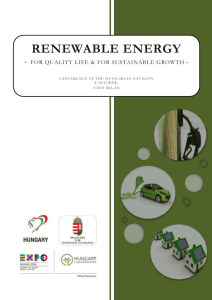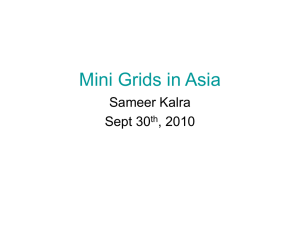PPT
advertisement
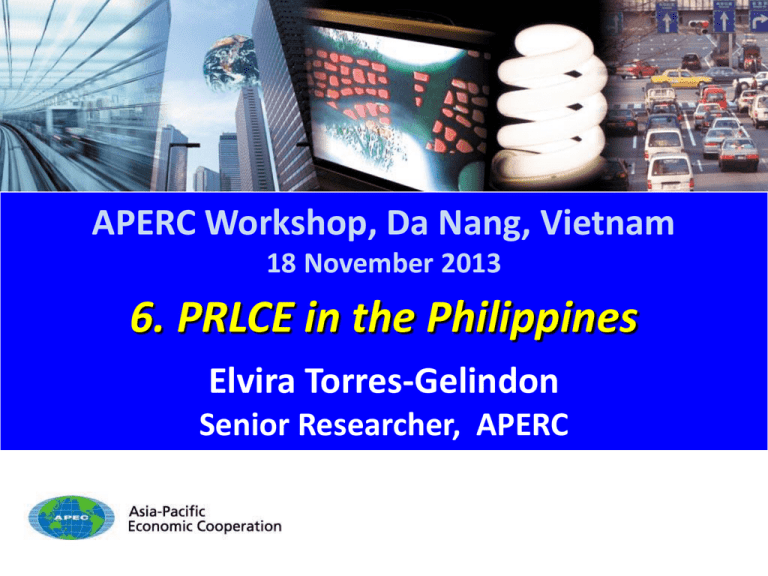
APERC Workshop, Da Nang, Vietnam 18 November 2013 6. PRLCE in the Philippines Elvira Torres-Gelindon Senior Researcher, APERC OUTLINE OF PRESENTATION 1 •Background 2 •Areas Covered 3 •Recommendations 4 •Expert Review Team 2 RE SOURCES 3 ENERGY MIX Primary Energy Mix Fuel Input Mix for Power Generation 4 RENEWABLE ENERGY DEVELOPMENT National Renewable Energy Program (NREP) Passage of Republic Act 9513 or Renewable Act of 2008 -Accelerates the economy’s RE development National Renewable Energy Board (NREB) Renewable Energy Management Bureau (REMB) 5 NATIONAL RENEWABLE ENERGY PROGRAM (NREP) Institutionalize a comprehensive approach to accelerate the applications of renewable energy technologies in a sustainable manner Development Framework Sectoral SubPrograms Policy and Program Support Setoral Targets 1. Increase geothermal capacity by 75.0 percent; 2. Increase hydropower capacity by 160 percent; 3. Deliver additional 277MW biomass power capacities; 4. Attain wind power grid parity with the commissioning of 2,345 MW additional capacities; 5. Mainstream an additional 284 MW solar power capacities and pursue the achievement of the 1,528 MW aspirational target; 6. Develop the first ocean energy facility for the country. The 2010 RE Capacity level tripled by 2030 6 AREAS COVERED IN THE REVIEW Institutional Context P R L C E Renewable Energy Goals, Targets and Strategy Regulation and Infrastructure Bio-Fuels and Biomass Energy Geothermal, Solar and Wind Hydropower Energy Power Supply System (Smart Grid, FiT, Private Participation Green House Gas Management 7 THE RECOMMENDATIONS 8 INSTITUTIONAL CONTEXT 3 Recommendations • Regulatory procedures for RE development should be less time-consuming; • Reinforce the policy formulation function of REMB for RE, in collaboration with EPPB, to increase feedback from policy implementation to policy formulation at the implementation of RE development proceeds; • Reconsider the composition of NREB to make governmental and private members in equal number, thus giving the independent chairperson a casting vote, which will give more voice to the private sector and enhance the neutrality of NREB. 9 RENEWABLE ENERGY GOALS, TARGETS and STRATEGY 5 Recommendations • The NREP; the National Biofuels Program; the NEECP and other energy related plans and programs should be harmonized and the updated copies be posted in a single website location. The plans should each quote the aims of the relevant legislation that they are seeking to fulfill; • Implement broad scope multi-regional techno-economic modeling of the Philippines energy and agricultural economies to provide more certainty on future targets and investment strategies. 10 REGULATION AND INFRASTRUCTURE 6 Recommendations • Necessary for a Ministerial level action which will establish a Ministerial decision (action plans) to address the issue on tedious processing of document which will also consequently achieve the government’s goal of good governance; • Need to review RE Law to give more attention to off-grid RE issues; The DOE, RE developers and NGCP should continue its coordination and dialogues to address transmission/grid issues; 11 SUB-SECTORAL RECOMMENDATIONS Bio-Fuels and Biomass Energy (5) Geothermal, Solar and Wind (9) Hydropower Energy (5) More R&D should be undertaken to support the domestic uptake of biofuels Set the target for the development of solar and wind for off-grid areas and roof-top solar PV, as well as start creating official statistics for solar and wind; Promotion of multi-scale hydro power supply system’s especially in the remote areas; 12 POWER SUPPLY SYSTEM (7) Feed-in-Tariff RE Source/ Technology Solar Wind Biomass Run-of-the-river Hydro Rates (per Kwh) P 9.68 (USD 0.242) P 8.53 (USD 0.213) P 6.63 (USD 0.166) P 5.90 (USD 0.147) FiT for Ocean Thermal projects is for further study and data gathering, while the Hydropower Reservoir and Geothermal supplies were not subjected to the FIT due to market competitiveness. Develop FiT for sub-categories of RE technologies depending on technology maturity, regional application and socioeconomic conditions (e.g. solar PV for household, solar farm, commercial rooftop utilization, etc.); 13 GREEN HOUSE GAS MANAGEMENT (5) (continue) Accelerate the registration procedures for applications for FIT qualification and also the joint use of FIT and RPS for RE promotion should be optimized and clarified. CDM RPS 14 THE 45 RECOMMENDATIONS 15 THE REVIEW TEAM • Mr. Takato OJIMI (Review Team Chair) • Dr. Li KUISHAN (Hydropower Energy) • Mr. Masaomi KOYAMA China IRENA APERC • Dr. Kazutomo IRIE (Institutional Context) APERC • Ms. Elvira TorresGELINDON (Regulation and Infrastructure) APERC • Mr. Haniff NGADI (Power Supply System) Malaysia (Geothermal, Solar and Wind) • Dr. Jonathan LEAVER (Renewable Energy Goals and Strategy) New Zealand • Dr. Akihiro WATABE (Green House Gas Management) Japan • Dr. Chatchawan CHAICHANA (Bio-fuels and Biomass Energy Thailand 16 PHOTOS 17 Thank you for your kind attention http://aperc.ieej.or.jp 18
